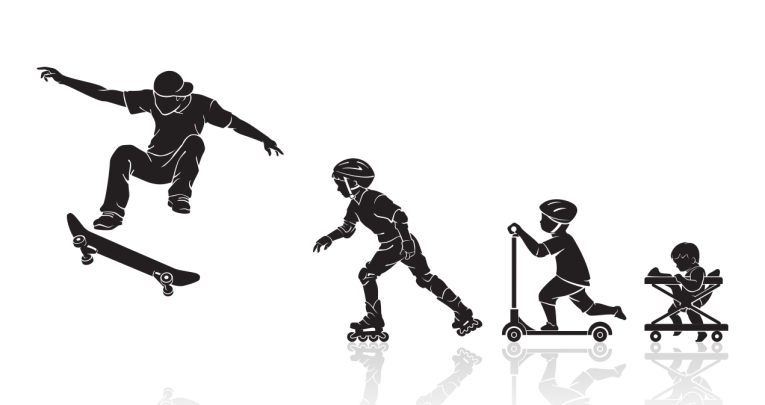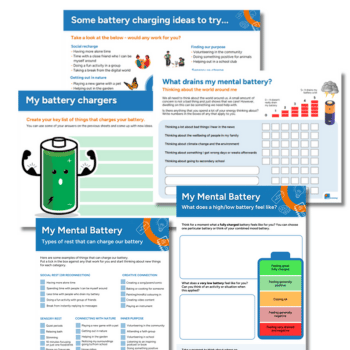Mental Health & Wellbeing – Understanding Young People’s Development Doesn’t Always Match Their Age Helps You Better Support Them

Discrepancies between age and typical social and emotional development can lead to any number of difficulties, including disruptive behaviour, inability to concentrate, disengagement, school refusal and escalating mental health needs

- by Alastair Lidster
- Educational psychologist and co-creator of the Fagus Educational Resource

Understanding how to support a pupil’s emotional and social development can be crucial for young people who are struggling at school; and recognising that a child’s chronological age may be out of line with the expected social and emotional development expectations associated with it is often the first step towards providing that support.
Children may develop socially and emotionally more slowly than might be expected for their age for any number of reasons, with good examples being attachment difficulties or early-life trauma.
This discrepancy between actual age and typical social and emotional development can lead to any number of difficulties for children at school, including disruptive behaviour, inability to concentrate, disengagement, school refusal and escalating mental health issues. Indeed, a recent study showed that an increasing number of teenagers are resorting to suicide attempts to draw attention to their mental health needs.
Some children with specific needs may be lucky enough to attend specialist schools where they can access expert support, but the vast majority of children and young people are relying on teachers and staff in mainstream institutions to help them develop the emotional and social tools they need to access education and be ready for life beyond school.
Not surprisingly, many fail academically because they do not have the emotional and social maturity necessary to connect with the curriculum and cope in a busy school environment.
One size won’t fit all
An example of how a misunderstanding of a child’s emotional and social development can cause difficulties might be to do with the assumptions made when a school creates its rules and behaviour policies. Most secondary schools, naturally enough, make rules on the basis that their pupils are 11 years old and upwards.
However, if these expectations are applied to a child who is chronologically 12 years old, but has a level of social and emotional development normally found in a seven-year-old, problems are likely.
Pupils who have delayed social and emotional development often experience low self-esteem. Activities which are designed to boost their confidence and help them believe in their abilities are, of course, recognised to be much more effective than a punitive approach.
Sometimes though, the psychological mechanisms by which children make judgments about their own strengths and weaknesses are not appropriately developed, leading to misinterpretation of adults’ feedback. Sometimes our praise is not heard, and in these situations improving self-awareness may be more effective than trying to increase self-esteem; the latter will follow when a child is able to give a more accurate appraisal of their own success.
Research has shown that cognitive ability is not the only factor in a pupil’s chance of long-term academic success. Study after study has shown a child’s ability to concentrate, persist and remain resilient are more important – and these are all competencies linked to social and emotional development.
A new framework
So having established that a pupil’s ability to manage their social and emotional functions is critical to their academic success as well as to their personal well-being, it is surprising that there is so little support for mainstream teachers to help pupils in this area of their development.
We all benefit from a deeper understanding of a child’s social and emotional development so we can set appropriate goals and design a plan to help a student reach those goals. Teachers are adept at monitoring academic progress but they do not generally have easy access to systems designed to help them navigate a child’s social and emotional development.
While I was working with a team of teachers and educational psychologists at Beech Lodge School – an institution in Berkshire which specialises in teaching children who do not comfortably fit with the standard education system – we realised that there wasn’t a framework in existence to help teachers monitor and measure social and emotional development in the same way that they might do with academic outcomes.
To address this need, we spent three years developing a series of guides and checklists which can be used to identify how a child is progressing through typical social and emotional development.
Each guide has an introduction, sequenced descriptions of development across different age ranges, explanatory notes and references. These help teachers identify if a young person has delayed social and emotional development in specific areas. Once their current point of development has been established, the guides and checklists are designed to identify the next small step forward.
All behaviour is communication; but hearing those messages sometimes needs careful analysis in relation to how we understand typical social and emotional development.
Case Study
Senior school reviews behaviour policy Alastair’s team recently collaborated with PAC-UK, the UK’s largest independent adoption support agency, to apply a support framework to help a 16-year-old boy who was facing major problems at school.
Using the Fagus Developmental Guides, teachers were able to identify that Sam was not coping with difficult situations and was engaging in risky behaviour to manage his stress. The team used the Coping Developmental Guide to understand the usual developmental progression for coping and were able to identify Sam’s development as being in Middle Childhood, which is below his chronological age.
They found he was not seeking help from others when he found things stressful – a coping strategy which usually emerges during early childhood. The team set an objective for Sam to “tell staff to ask his support network for help”. To achieve this, the team worked with Sam to map out his circle of support and to identify the people he could go to for help in his network, including people at school.
Sam’s goal was reviewed after six weeks and the team were pleased to find that Sam’s behavioural incidents at school had halved. They could see that he was asking for support from his network and Sam said that he felt that the process had helped him recognise who cared for him and who he could turn to, which had made him feel safer. As a result, he had made fewer dangerous choices.
Alastair Lidster was a TA and a teacher before training as an educational psychologist. To find out more about the Fagus Developmental Guides, visit fagus.org.uk.










